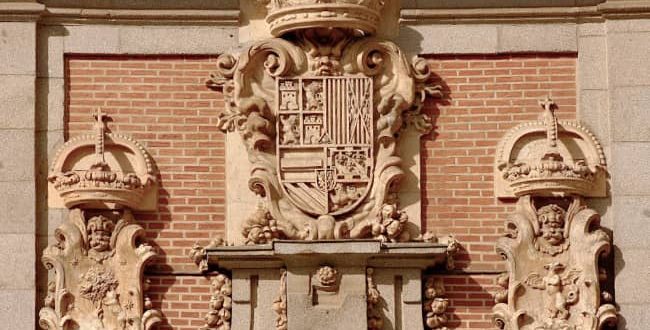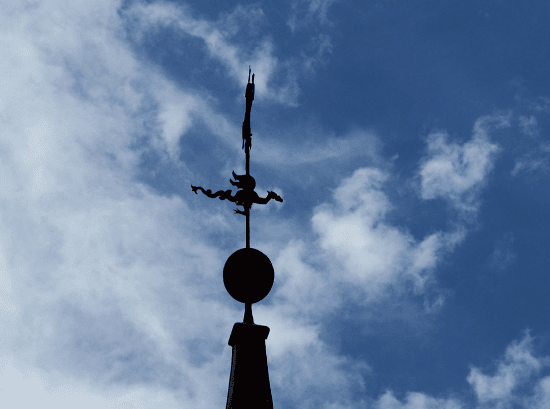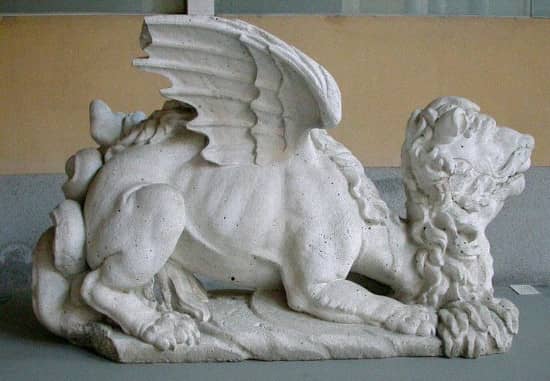
The dragon of Madrid’s emblem
One of Madrid’s most famous symbols is its coat of arms, which depicts a bear climbing a tree. But this symbol hasn’t always been the only one on the capital’s emblem; sometimes a dragon is associated with it! The dragon of Madrid’s emblem !
So what does this fantastic animal have to do with the city of Madrid? Engraved in stone on municipal facades, or inscribed in stained-glass windows, the dragon of Madrid’s emblem (or griffin, depending on the source) was drawn alongside the bear as the capital’s symbol from 1842, but its history goes back much further. In 1569, a Spanish chronicler and humanist, Juan López de Hoyos – one of Miguel de Cervantes’ teachers – recounts that, during the demolition of the Puerta Cerrada, near today’s Plaza de la Villa, a stone with a dragon engraved on it was found.
Numerous stories followed from this, some placing Madrid at the heart of Greco-Roman myths, others making it an ancient Trojan colony, and even others evoking legends of knights battling the fantastic animal. But it’s above all the theory of a Roman community settled in this region 2,000 years ago and bearing the dragon emblem that is held to justify the modification of the capital’s coat of arms in the mid-19th century.

A strategic change of image
Even then, the marketing of a city was important. It may seem anachronistic, but it was indeed an image strategy that led the Madrid Court to decide on a change of emblem.
Under Philip III, at the end of the 16th and beginning of the 17th centuries, the King’s favorite and advisor, the Duke of Lerma, bought land in Valladolid and proposed that the King move there. Madrid, still a young capital, had to compete. The municipality began to accumulate the reasons that made it worthy of being a strong institutional city, able to measure up to the Empire. Among these were myths about the city’s foundation dating back to ancient Greece.
At this time in Europe, there’s nothing better than Greco-Roman origins to ensure legitimacy. Catholic Spain was looking for a “noble” founding story. In Madrid, López de Hoyos’ texts were revived and reinterpreted. In particular, the region referred to a “frightening and ferocious dragon, which the Greeks wore on their weapons and used on their flags”, the fire it breathed out being associated with Zeus’ thunderbolts.

It’s hard to say today whether it was this that brought the king back to the capital in 1606, but as the legends surrounding the Madrid dragon were well established, it was decided two centuries later to change the city’s coat of arms, which remained adorned with the bear and the dragon until 1967.
The return of the bear
It was only 50 years ago, therefore, that the question of Madrid’s coat of arms was revisited, and the Royal Academy of History concluded that the inclusion of the dragon was an error of interpretation from the 17th-century. Thus the city’s now-famous emblem, “el Oso y Madroño”, returned to the spotlight.
But you may still find traces of the dragon in the capital. Whether on the coats of arms engraved in the Casa de la Villa, former official town hall, on its magnificent interior stained-glass windows, on honorary statues of the 19th century or even at Madrid’s Museum of Origins, the San Isidro Museum, which, in the heart of the Latina district, explores the history of the territory until the arrival of the Habsburgs. On display is a stone sculpture of the dragon, once one of the fountains surrounding the famous goddess Cibeles on the Prado Avenue. At the time, the fountain was a water reserve, with a stream pouring out of the dragon’s mouth for the water carriers. The emblem adorned the fountain until the end of the 19th century, but the arrival of running water rendered it useless, and it is now preserved and displayed in the museum.

So don’t be surprised if you come across dragons in Madrid: they’re part of the legends that have run through the city’s history since the Middle Ages.
But to find out more about the myth behind the bear and the strawberry tree, the approved symbols of historians today, we invite you to discover our free tour Madrid . Do not miss it!